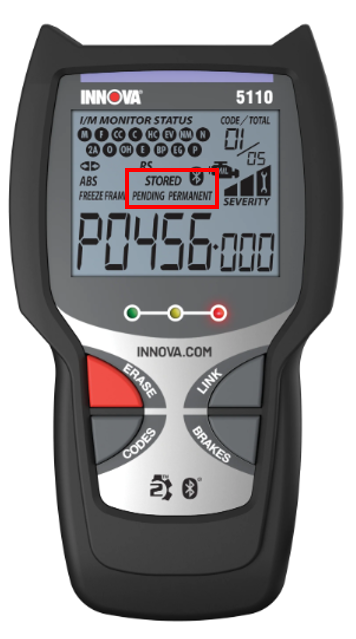Description: This guide aims to differentiate between Permanent Diagnostic Trouble Codes (PDTCs) and Diagnostic Trouble Codes (DTCs), two types of trouble codes you may encounter when diagnosing vehicle issues.

What Are Diagnostic Trouble Codes (DTCs)?
DTCs are alphanumeric codes generated and stored by a vehicle's On-Board Diagnostic (OBD) system. They signal that the vehicle's computer, commonly known as the Powertrain Control Module (PCM), has detected an issue in its system. DTCs are used to help automotive technicians, and DIY mechanics, diagnose problems in a vehicle. Typically, DTCs can be easily cleared with an OBD scan tool or even by disconnecting the vehicle's battery (although this is not the recommended method).
What Are Permanent Diagnostic Trouble Codes (PDTCs)?
PDTCs, like DTCs, are codes generated by a vehicle's OBD system when it detects a problem. The primary difference lies in the manner in which they can be cleared. PDTCs are designed to stay in the system and can only be cleared once the vehicle's onboard computer confirms that the issue has been resolved. Unlike DTCs, they cannot be manually reset or cleared by disconnecting the battery.
Key Differences
1. Clearing Mechanism:
- DTC: Can be manually cleared using an OBD scan tool or sometimes by disconnecting the vehicle’s battery.
- PDTC: Can only be cleared by resolving the underlying issue and allowing the vehicle to complete its drive cycles naturally.
2. Purpose:
- DTC: Aids in diagnosing problems with the vehicle.
- PDTC: Ensures that the underlying problem is actually fixed before the code is cleared, serving as a check on both the vehicle and the repair process.
3. Flexibility:
- DTC: Offers more flexibility and is often used during the initial stages of troubleshooting.
- PDTC: Is more stringent and is meant to ensure compliance with emission and other critical system standards.
4. User Interaction:
- DTC: The user can interact directly to reset the code.
- PDTC: The user cannot interact to reset the code; it's automated based on repair and subsequent monitoring.
How to Clear PDTCs
1. Identify the Issue: Use an advanced OBD-II scanner capable of reading PDTCs to identify the underlying problem.
2. Repair the Problem: Based on the diagnostic information, repair the underlying problem that triggered the PDTC.
3. Drive the Vehicle: Take the vehicle for a drive to allow the onboard computer to run its monitors again. The PDTC will clear itself if the problem is truly resolved.
By understanding the differences between PDTCs and DTCs, you can approach vehicle diagnostics and repair more effectively.